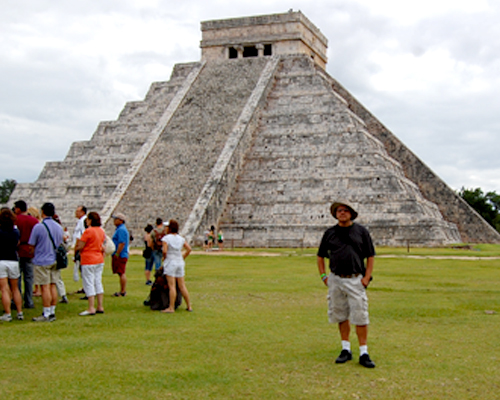
Countdown begins for the 2012 Maya phenomenon
There are only 51 weeks remaining before Dec. 21, 2012, when some people believe the Mayan culture predicted the end of the world.
The now well-recognized 2012 phenomenon comprises a range of beliefs according to which cataclysmic or transformative events will occur on December 21, 2012. This date is regarded as the end-date of a 5,125-year-long cycle in the Mesoamerican Long Count calendar. Various astronomical alignments and numerological formulae related to this date have been proposed.
End of the world or a similar catastrophe scenarios suggested include the arrival of the next solar maximum, or Earth's collision with a black hole, passing asteroid or a planet called "Nibiru".
The Maya reputation for wisdom and astronomy has aided in people’s fears that the alleged prediction is true.
The Mayan’s Long Count calendar begins in 3,114 B.C., marking time in 394-year periods known as baktuns. Thirteen was a significant, sacred number for the Mayas, and they wrote that the 13th baktun ends on Dec. 21, 2012.
The doomsday theories stem from a stone tablet discovered in the 1960s at the archaeological site of Tortuguero in the Gulf of Mexico state of Tabasco that describes the return of a Mayan god at the end of a 13th period.
In 1966, American archaeologist and anthropologist Michael D. Coe wrote that "there is a suggestion ... that Armageddon would overtake the degenerate peoples of the world and...our present universe [would] be annihilated [in December 2012]."
Coe's interpretation was repeated by other scholars through the early 1990s. In contrast, later researchers said that, while the end of the 13th baktun would perhaps be a cause for celebration, it did not mark the end of the calendar.
Scholars from various disciplines have dismissed the idea of such deadly events occurring in 2012. Astronomers and other scientists have rejected the proposed events, stating that they are contradicted by simple astronomical observations.
"There is nothing in the Maya or Aztec or ancient Mesoamerican prophecy to suggest that they prophesied a sudden or major change of any sort in 2012," said Mayanist scholar Mark Van Stone. "The notion of a "Great Cycle" coming to an end is completely a modern invention."
Such a well-known and fear-based story does offer many opportunities for business ventures, religious institutions and the tourism business.
Mexico’s Mayan region has launched an apocalypse countdown, which is really a year-long celebration. Mexico's tourism agency expects to attract 52 million visitors in 2012 to the regions of Chiapas, Yucatan, Quintana Roo, Tabasco and Campeche. All of Mexico usually attracts about 22 million foreigners in a year.
"People who still live in Mayan villages will host rites and burn incense for us to go back in time and try to understand the Mayan wisdom," said Yeanet Zaldo, a tourism spokeswoman for the Caribbean state of Quintana Roo.
“According to Mayans, 2012 is the start of a new cycle – nothing to do with the end of the world,” says Rigo Galvez, of Hayward. Originally from El Salvador, Galvez has studied Mayan culture and has visited Mayan ruins in Mexico and other countries.
“We Salvadorans are descendants of Mayans and in El Salvador there are three Mayan tribes,” he adds.
Galvez stresses that the Mayan astronomers were advanced, but that the end of the world prophecy is only poor interpretation of the Mayan’s writing.
“The most important element in the Mayan calendar is the recognition of the periods and movement of the sun, moon, planets, and even the galaxy. Mayans never predicted catastrophes.”
"There will be another cycle," said E. Wyllys Andrews V, director of the Tulane University Middle American Research Institute. "We know the Maya thought there was one before this, and that implies they were comfortable with the idea of another one after this."
Making a distinction between today’s world and the Mayan culture, Galvez concludes, “In modern society, most of the time everything is associated with pessimism, fear and catastrophe - for Mayans it was only change and movement.”